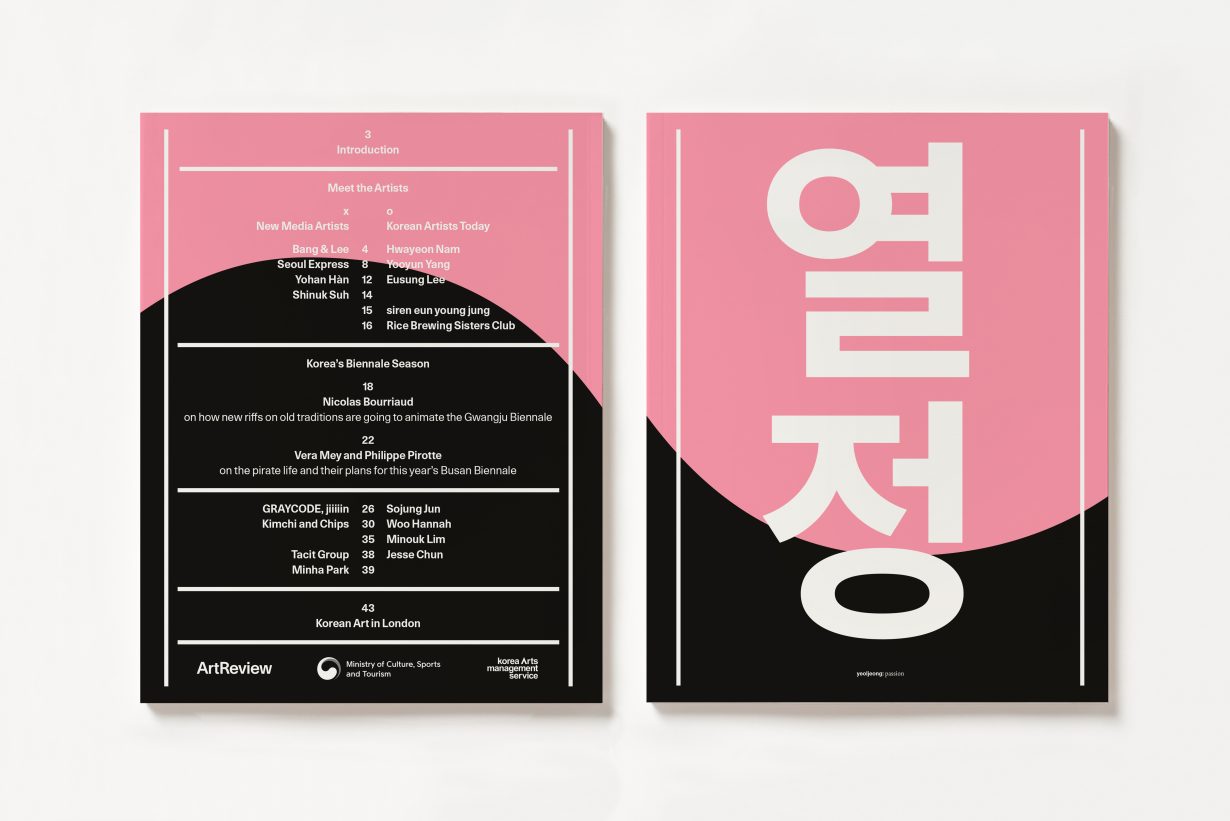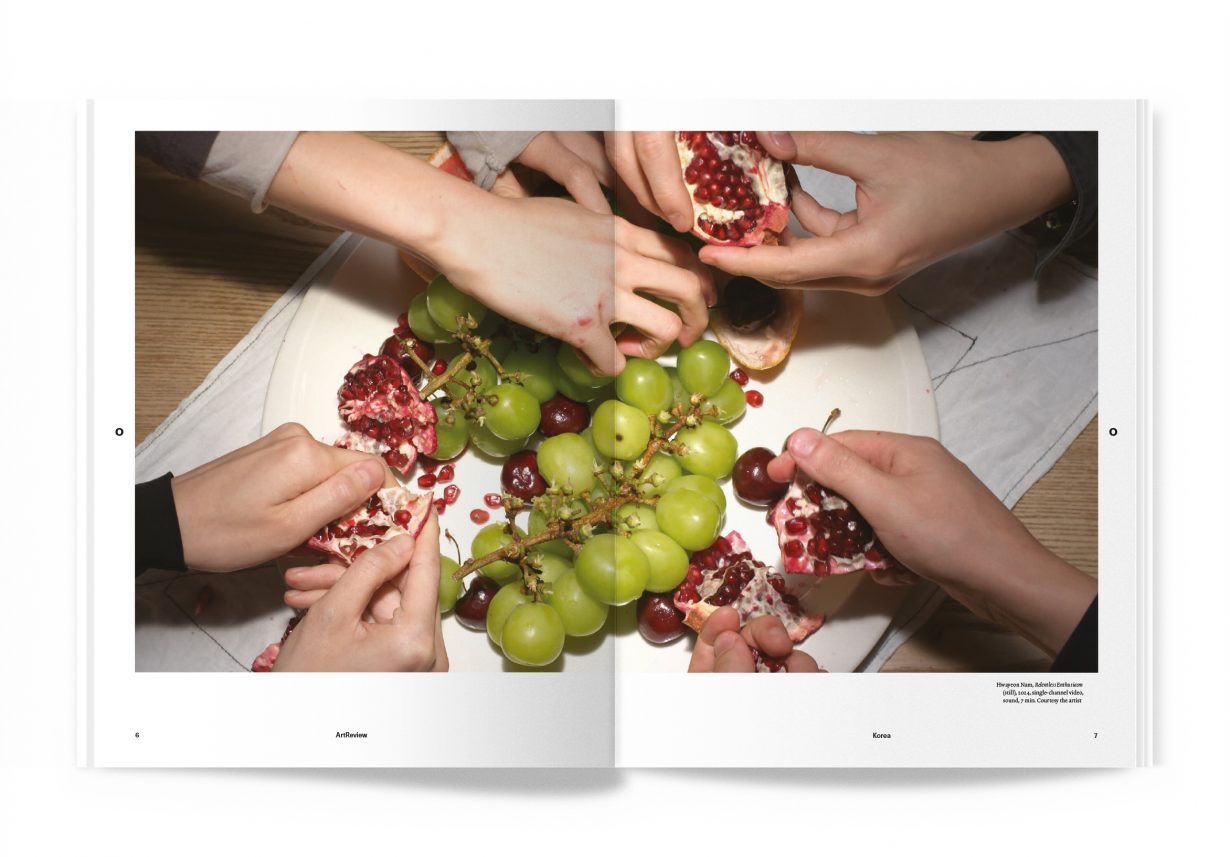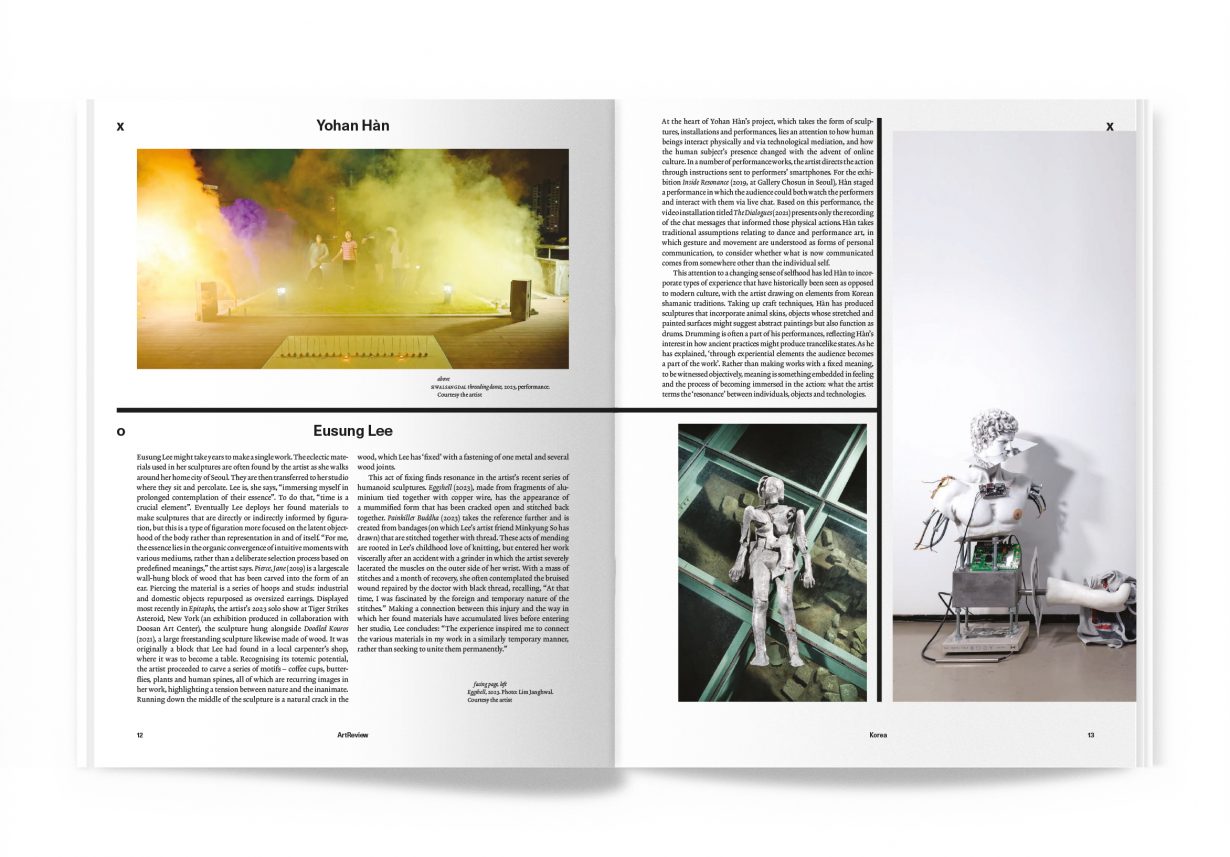This special publication celebrating contemporary Korean art, supported by Korea Arts Management Service, is available for free with the September issue of ArtReview

***Subscribe now or get copies from our new online shop***
Once you’ve read the profiles of the 17 Korean artists collected in this publication you might struggle to think that ‘Korean’ has much to offer as an art-historical or art-critical term – such is the range of practices gathered here. In a series of profiles, the artists speak about their inspirations, as well as their engagements with issues ranging from local histories to the (un)translatability of language to climate actions and social initiatives. Which, in a way, is to begin this booklet with the contradiction that the artists here are connected by a shared geographic and cultural background, but that equally their work demonstrates a variety that resists any such attempts to label or to pigeonhole (which, let’s face it, is something that art critics, Tweeters and Instagrammers love to do). Which, in turn, is a user’s warning: everything this publication asserts it denies!
The artists profiled here are part of two annual initiatives organised by the Korean Arts Management Service (KAMS), which operates under Korea’s Ministry of Culture, Sports and Tourism. Korean Artists Today is an initiative designed to further the global exposure of Korean artists. These artists are nominated by a committee of international and domestic art professionals based on their potential to impact the global art scene. In 2024 nine Korean artists were selected, whose works use a range of mediums, from painting to sculpture to video, deeply rooted in Korean culture and history, while engaging with crucial issues of modernity and identity. Additionally, this year KAMS has separately spotlighted new media and multidisciplinary art – dynamic domains that thrive in Korea despite not occupying a central position in traditional genre-based art discourse. Alongside Korean Artists Today, eight Korean New Media Artists were selected for their boundary-breaking experimental endeavours across different media and genres, and for the critical role they play in Korea’s rich history in the evolution of media and multidisciplinary art.
In the meantime, at the midpoint of Korea’s biennale season, with the Busan Biennale having just opened and the Gwangju Biennale about to follow suit, ArtReview spoke to Philippe Pirotte and Vera Mey, who are artistic directors of the former, and Nicolas Bourriaud, who helms the latter, about their plans for these influential platforms and about their takeaways from the Korean art scene. In addition, they discuss how Korea’s musical traditions might cast new light on ideas of space, and how traditions of its ports and seas might inspire alternative or ‘fugitive’ enlightenment around individual empowerment. Finally, we spotlight a series of three exhibitions that feature Korean artists, which will be staged by Seoul-based galleries at No. 9 Cork Street in London this autumn. Another example of what is an ongoing embrace of Korean art on the international scene.
For those of you who also want to be part of that, you will find throughout this publication a series of ‘useful’ Korean terms – suggested by the featured artists – that might help a visitor navigate the Korean art scene. From phrases that capture the spirits of Korean art to words to use when ordering coffee, they present an insider’s take on the role contemporary Korean art plays, and perhaps, ArtReview dreams, may serve as anchors enabling further discussions and dialogues.
ArtReview is grateful for the support of KAMS under the Ministry of Culture, Sports and Tourism and proud to be a part of a project that fosters connections between the Korean and international art scenes.






***Subscribe now or get copies from our new online shop***